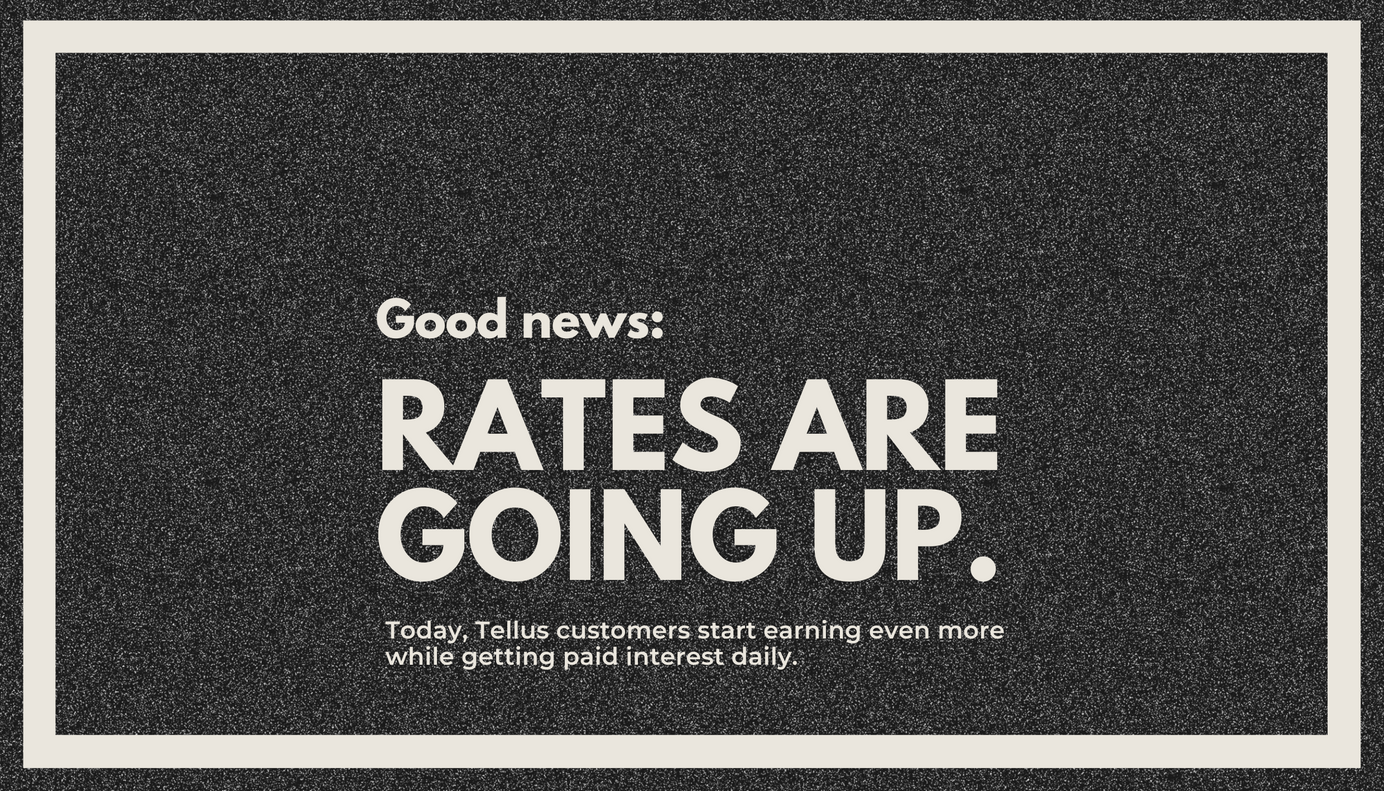
How to save for retirement without a 401(k)
April is Financial Literacy Month. We'll be diving into several topics to help you build smart financial habits and make informed decisions.
A 401(k) is a type of retirement plan your employer may offer. But what are your options if they don’t?
If you have access to a 401(k) plan, it’s important to know that investing in a 401(k) has some downsides. Before you allocate all of your retirement savings to a 401(k), consider the alternative options available to you.
Thankfully, there are several other ways to save for retirement that might be a better fit for your life situation and retirement goals.
In this article, we’ll discuss how to save for retirement without a 401(k). You’ll learn about alternatives like IRAs and HSAs.
We’ll also discuss what to do after you’ve maxed out your IRA and HSA contributions, how to save for retirement if you’re self-employed, and more.
Why not save for retirement with a 401(k)?
It’s not a requirement for most employers to offer a 401(k).
So for many people, the biggest reason for not using a 401(k) to save for retirement is simply because their employer doesn’t offer one. They don’t even have access to it as an option.
If you do have access to a 401(k), they can offer some benefits.
- Your employer may match your contributions, usually up to 6% of your salary.
- A 401(k) is simple to use. Your employer may have already automatically enrolled you into the plan.
- You defer taxes until you start to withdraw money from your 401(k).
- Contributing to a 401(k) could decrease your taxes owed to the IRS each year.
However, 401(k) plans also have some significant downsides to be aware of.
High fees
The average 401(k) plan will charge you 2.22% per year to manage your money for you. Some may even charge fees as high as 5% per year.
It’s hard to save money and get ahead with such a large percentage of your 401(k) going toward paying fees every year.
Limited investment options within your 401(k)
Most 401(k) plans only provide you with a short list of mutual funds or ETFs (exchange-traded funds) to choose from. That means you can't choose to invest in any individual stock or bond.
It’s hard to access your 401(k) funds early
Once you put money into a 401(k), you lose control of it for a lengthy period of time.
You can’t withdraw from your 401(k) before age 59.5 without paying a 10% penalty, plus any taxes owing on the withdrawn amount.
So if an unexpected expense arises, you can’t easily dip into your 401(k) to cover expenses.
Your 401(k) is tied to your company
The average person will have 12 different jobs in their lifetime.
If you change employers, your 401(k) doesn't automatically come with you.
Rolling over your 401(k) into a new plan or an IRA can be a major inconvenience. Sometimes you can leave your 401(k) at your old employer, but that's not always an option.
And if you choose to cash out your 401(k), it’ll trigger penalties and taxes owed.
How to save money for retirement without a 401(k)
After learning the downsides of a 401(k), you’re probably interested in learning about alternative options.
Luckily, there are several other types of accounts to choose from.
Traditional IRA
A traditional IRA (individual retirement account) lets you contribute pre-tax dollars. You can invest in almost any stock, mutual fund, or bond within an IRA.
Your money grows tax-deferred until you start to withdraw your money in retirement.
Like with a 401(k) plan, you may owe additional taxes if you withdraw money from a traditional IRA before age 59.5. You’re also required to start withdrawing by age 72.
Roth IRA
There’s one key difference between a traditional IRA and a Roth IRA: With a Roth IRA, you contribute after-tax dollars.
The benefit of this is that when you start withdrawing from your Roth IRA after age 59.5, you don’t owe any additional taxes on your investments.
For both traditional and Roth IRAs, you can contribute up to $6,000 per year (or $7,000 if you’re age 50+).
Roth IRAs have an additional restriction, which is an income limit of $144,000 for individuals or $214,000 for married couples. If you exceed this amount of annual income, you can’t contribute to a Roth IRA without paying penalties.
Generally speaking, a traditional IRA is the better choice if you think you’ll be in a lower tax bracket after you retire. A Roth IRA is better for those who think they’re in a lower tax bracket today than they will be during retirement.
Spousal IRA
IRAs have a provision that states you must have earned income to contribute to them. One exception to this rule is the spousal IRA.
The spousal IRA was specifically created so that a working spouse can contribute to an IRA under the name of a spouse who doesn't work and therefore has no income or very little of their own income.
This allows couples to take advantage of the full tax benefits of individual retirement accounts, even if one of them isn’t working.
HSAs (Health Savings Accounts)
An HSA isn’t a retirement plan, but it offers many of the same advantages as one.
You can contribute to an HSA using pre-tax funds, and your money grows tax-free while it’s in an HSA.
The main restriction of an HSA is that funds can only be used tax-free to pay for qualifying medical expenses. That includes things like doctor visits, prescription drugs, hearing aids, deductibles, copayments, and even acupuncture.
One advantage of an HSA is that you can use it at any age, as long as it’s for qualifying medical expenses. So unlike a 401(k) or IRA, you don’t need to wait until age 59.5 to get access to your money for certain expenses.
After age 65, or if you become disabled, you can withdraw money from an HSA for non-qualifying expenses without paying a penalty. However, you’ll need to pay taxes on it.
Thrift savings plan (TSP)
A thrift savings plan is a type of retirement account that’s exclusively available to federal employees or members of the armed forces.
It operates very similarly to a 401(k) plan.
A TSP has a much higher annual maximum contribution limit than an IRA ($20,500 vs. $6,000).
A major advantage of a TSP is that the federal government will match 1% of your annual salary as a contribution to your TSP, even if you contribute nothing. Matching maxes out at 5% if you contribute 5% of your annual salary to a TSP.
How to save after you’ve maxed out your IRA and HSA
If you’ve maxed out your IRA and HSA contributions for the year, what are your other options for saving money?
Taxable investment account
An example of a taxable investment account is a brokerage account. This type of account gives you full freedom to invest your money in various stocks, bonds, and mutual funds.
The downside is that you'll need to pay taxes on any gains. However, if you hold an investment for at least a year before selling, you'll pay a lower long-term capital gains rate. This can be 0%, 15%, or 20%, depending on your tax bracket.
If you sell an investment in less than a year, you'll pay short-term capital gains, which is the same as your regular income tax bracket.
Real estate investment
Investing in real estate isn’t for everyone. You might not want the hassle of dealing with tenants.
But if it's something that interests you, it might be worth considering. Real estate offers numerous tax write-offs and business expenses that you can use to lower the amount of taxes you’ll pay each year.
You can deduct expenses like mortgage interest, property insurance, taxes, and repairs.
How to save for retirement if you’re self-employed
If you're self-employed, you can take advantage of solo 401(k) plans.
A self-employed person can contribute significantly more to their 401(k) each year ($56,000) than an employee ($19,500).
Another option is a SEP (Simplified Employee Pension) or a SIMPLE IRA. These also often have higher annual contribution limits than standard IRAs or 401(k)s.
If you were previously employed but have become self-employed, you can roll over an existing 401(k) into an IRA without paying any penalties. A rollover also doesn’t count toward your contribution limit for the year.
Lastly, you likely qualify for a 403(b) if you run a nonprofit or tax-exempt organization.
Saving for financial independence/retire early (FIRE)
The FIRE movement is a lifestyle of extreme savings and investment that enables people to retire early.
Being part of the financial independence/retire early movement is simple enough in theory but requires a lot of discipline. Some FIRE proponents save up to 70% of their income.
The basic idea is to save up 25–30x your annual expenses, which you can then use to retire early and draw 3%–4% of your savings annually.
This is accomplished by investing as much money as possible, cutting your expenses, and finding alternative ways to boost your income.
There are a few different approaches to the FIRE model.
Lean FIRE
This involves reducing spending and a more minimalist lifestyle. Proponents of Lean FIRE often live on $30,000/year or less.
Fat FIRE
This is living the FIRE lifestyle without giving up your standard of living or reducing expenses. It requires a high income and extreme savings during the years that you’re working.
Coast FIRE
Coast FIRE is all about hitting a target amount of savings by a certain age, at which point you can stop contributing and "coast" on the compound interest to make up the rest of your nest egg until you retire. It’s not about retiring early as much as not having to put away money later on.
Barista FIRE
An in-between option, a Barista FIRE proponent will quit their 9 to 5 job but take a part-time job, like working at a grocery store or coffee shop. Working provides you with health coverage to avoid large unexpected health expenses that you'd otherwise need to dip into your retirement funds to cover later in life.
Saving for retirement and beyond
A 401(k) is one possible way to save for retirement. But it’s not the best choice for everyone, and it’s far from the only option.
Other tax-advantaged savings accounts worth considering include traditional and ROTH IRAs, HSAs, and thrift savings plans.








